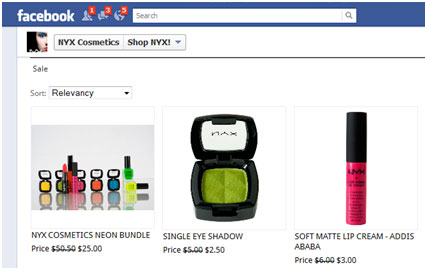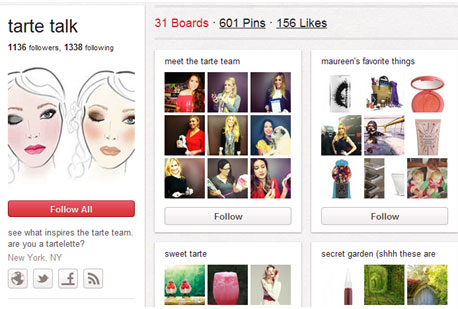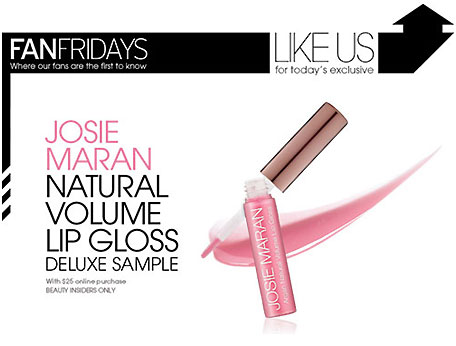At Kline, when addressing frequent inquiries concerning social commerce statistics in the beauty industry, we defer to our usual source, our recently published Beauty Marketing report, which offers an in-depth analysis of social marketing efforts for selected beauty brands. Given the infancy of Facebook commerce, otherwise known as “f-commerce”, typical comparative statistics can offer a mere idea of this channel’s emerging power, but beauty marketers should know that there is something up with this market and that this “something up” has already been gauged and assessed in our research.
Just as we published our findings, Procter & Gamble, one of the world’s largest marketers announced its intention to slash its traditional advertising budget to concentrate on the use of “more efficient” marketing returns through digital means.
And what has your company been doing? Did you know that social media is the 3rd most important marketing vehicle, behind price promotions and websites and ahead of many methods including traditional media?
New ever-evolving technologies now allow consumers to more directly and immediately interact with brands and companies, which is neatly epitomized by many brands efforts’. Social media is definitely being used to popularize and propagate brands. For example, during the Fall 2011, if you “liked” L’Occitane on Facebook, you became eligible to receive a free Shea Butter hand cream at one of their U.S. stores. Some beauty retailers accommodate many new and exciting activities for their fans: Séphora’s FanFridays on Facebook are fun and so ”INSIDERS ONLY” – encouraging fidelity, commitment, engagement, and – ultimately – sales!
Some brands go even further and start selling right on Facebook. For example, makeup manufacturer and e-retailer Nyx Cosmetics quietly opened a commerce-enabled Facebook store at the end of 2011, allowing U.S. Facebook users to buy products without ever leaving the social network. The company says the Facebook store is one part of its strategy to offer consumers the opportunity to shop in every emerging online sales channel without redirecting them to their regular e-shop.
Just a few months earlier, industry giant Procter & Gamble also upped their f-commerce game, opening new Facebook stores in Summer 2011. It seems that for P&G, f-commerce is less about sales and more about studying the brand users and their shopping habits. The P&G’s Facebook stores help P&G reward brand followers for their loyalty, as well as stimulate word of mouth, it also Enables Facebook users to “share” their purchases, creating even greater viral environment.

Some brands experimented with a combination of Facebook and other platforms. Such as MAC Cosmetics’ last year’s lineup of Wonder Women exclusives of eye, mail, face, and lip products promoting a custom-made Wonder Woman POW ring with the help of Foursquare. The MAC Cosmetics’ Facebook page included details on participating stores around the world and rewarded customers who checked in via Foursquare with the message received on their mobile devices with the special stickers. A select number of stickers lead to a special gift!
Cosmetics is a multi-billion dollar industry worldwide, and beauty brands have begun using social media such as Facebook to market directly to customers. However, for the moment, most brands have not yet created a Facebook presence that is markedly different from their websites. In other words, Facebook appears to simply be an exploratory extension of the company’s vision, not a unique opportunity to intimately market their products to their Facebook fans.
Facebook sales have not even taken off yet, but new trends and platforms are already popping up. One of them is Pinterest, the online pinboard, a new social marketing portal where some surprising companies are making the site’s visual features work for them to significant effect. While most users of the site are still individuals, brands and retailers have taken note of the major traffic the social media site has been seeing in recent months and its visually compelling format; consequently, many have begun creating their own Pinterest boards. Among these includes Nordstrom, which is already gathering many fans. The high-end retailer has won many followers by creating themed boards that change with the seasons, and some of their most popular boards include “Beauty Favorites,” which consolidates the most popular products as ”liked” by Pinterest users. This offers both consumer engagement and ad hoc market assessment.

As for a cosmetics brand, Tarte Cosmetics is being one of the great explorers of the platform, showing staff photos and product picks and ultimately linking to sell on ULTA Beauty’s website.

So, is traditional media passé? No, certainly not. People are influenced to perform an Internet searches based on something they saw on TV or read in print. Moreover, consumer products need a strong and lingering presence in customers’ memory space, which can be enhanced, but rarely established, by social media.
What remains undisputed is the symbiotic relationship between traditional and time proven media, which allows a far more pervasive and unforgettable presence, and a real-time adaptability afforded by social media. Both old and new media complement each other, and the dynamic needs to be optimized. Beauty’s social skills are now mixing and mingling in cyberspace to great effect, and your business is invited.

